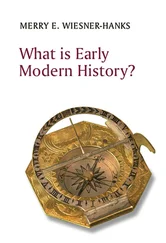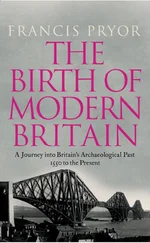R. Nisbet Bain - The Cambridge Modern History
Здесь есть возможность читать онлайн «R. Nisbet Bain - The Cambridge Modern History» — ознакомительный отрывок электронной книги совершенно бесплатно, а после прочтения отрывка купить полную версию. В некоторых случаях можно слушать аудио, скачать через торрент в формате fb2 и присутствует краткое содержание. Жанр: unrecognised, на английском языке. Описание произведения, (предисловие) а так же отзывы посетителей доступны на портале библиотеки ЛибКат.
- Название:The Cambridge Modern History
- Автор:
- Жанр:
- Год:неизвестен
- ISBN:нет данных
- Рейтинг книги:4 / 5. Голосов: 1
-
Избранное:Добавить в избранное
- Отзывы:
-
Ваша оценка:
- 80
- 1
- 2
- 3
- 4
- 5
The Cambridge Modern History: краткое содержание, описание и аннотация
Предлагаем к чтению аннотацию, описание, краткое содержание или предисловие (зависит от того, что написал сам автор книги «The Cambridge Modern History»). Если вы не нашли необходимую информацию о книге — напишите в комментариях, мы постараемся отыскать её.
The first series was planned by Lord Acton and edited by him with Stanley Leathes, Adolphus Ward and George Prothero.
The Cambridge Modern History Collection features all five original volumes:
Volume I: The Renaissance
Volume II: The Reformation, the End of the Middle Ages
Volume III The Wars of Religion
Volume IV: The 30 Years' War
Volume V: The Age of Louis XIV
The Cambridge Modern History — читать онлайн ознакомительный отрывок
Ниже представлен текст книги, разбитый по страницам. Система сохранения места последней прочитанной страницы, позволяет с удобством читать онлайн бесплатно книгу «The Cambridge Modern History», без необходимости каждый раз заново искать на чём Вы остановились. Поставьте закладку, и сможете в любой момент перейти на страницу, на которой закончили чтение.
Интервал:
Закладка:
Henry could not well have remained satisfied with this assurance. Next year Kildare and his cousin Desmond ericouraged Perkin Warbeck; and in 1492 the King made a complete change in the government of Ireland, appointing Walter Fitzsimmons, Archbishop of Dublin, as Lord Deputy in Kildare’s place. Some Irish feuds broke out, and there was fighting in the streets of Dublin; but at last in 1493 Kildare was induced by a promise of pardon to go over and seek the King’s presence. He and some Irish lords who went with him were invited by the King to a feast, at which Simnel served them with wine; and witnessing the shame on each of their faces when they saw their cupbearer, Henry remarked sarcastically “My masters, you will crown apes some day!” Kildare received his pardon on June 22, but was not restored to his old office. After some other changes the King (September 11, 1494) appointed his second son Henry as Lord Lieutenant (a mere honorary title), with Sir Edward Poynings as his Deputy. Poynings was a good soldier but found desultory warfare with Irish chieftains unsatisfactory, and tried to secure their loyalty by money payments. He then opened at Drogheda, on December 1, 1494, the Parliament which passed the celebrated Acts called by his name, whereby for the next three centuries all legislation submitted to the Irish Parliament required first to be approved by the English Council. Other enactments in this Parliament were conceived in the same spirit as laws passed in England, to put down armed retinues and the war-cries of hostile factions. But having established a new system of government, Poynings was recalled in January, 1496; and on August 6 following Kildare, who had curiously regained the King’s confidence by his frankness, was reinstated as Deputy. From that day he held the office till his death and was faithful both to Henry and to his son. The King seems to have believed from the first that nothing but a little personal intercourse with him was required to make him a loyal subject; and he was right in the belief.
Warbeck’s imposture being now at an end, the King did not at first care to keep him in very close confinement. But on June 9, 1498 (the year after his capture), he created some alarm by escaping at night from the King’s Court, where he had been only watched by keepers. He got no further, however, than Sheen, where he again took sanctuary and prevailed upon the prior to intercede for him. He was placed in the stocks for several hours, one day at Westminster and another day in Cheapside; after which he was shut up in the Tower, where he remained the greater part of next year. But meanwhile the King had been disquieted by a new impostor, a young man named Ralph Wilford, who suddenly appeared in Kent, first telling people privately that he was the Earl of Warwick just escaped from the Tower; while one Friar Patrick, by whom he was accompanied, confirmed the story and at last declared it from the pulpit. Both the young man and the friar were soon appreherided, and the former was hanged on Shrove Tuesday (February 12, 1499). A few weeks later it was observed, that Henry seemed to have grown twenty years older, and was spending much time in religious observances, while also accumulating money, of which he had an unequalled store. That he was brooding over danger to himself is hardly doubtful. ‘ Later in the year Warbeck managed to corrupt some of his keepers, with whom he formed a conspiracy to kill Sir John Digby, the Lieutenant of the Tower, and liberate himself and the Earl of Warwick, who, having been a prisoner from boyhood and knowing nothing of the world, gave too easy an assent to the project. Warbeck was tried and hanged at Tyburn in November with his old associate, John & Water, Mayor of Cork. The Earl of Warwick was arraigned at Westminster before the Earl of Oxford as Constable of England, confessed the indictment in his simplicity, and was beheaded on Tower Hill.
Warwick’s confinement had been all along justified only by the danger of leaving him at liberty; but his execution was felt to be nothing less than a judicial murder. One thing, however, was made clear to Yorkist intriguers; neither counterfeit Warwicks nor any other counterfeits would avail them now. If they took further action, it must be in their own names.
The year 1500 was a year of Jubilee at Rome, and in England a period of domestic peace seemed to have begun. Henry was much stronger now in his relations with foreign princes. The stoppage of trade with the Netherlands, owing to the support given to Warbeck there in 1493, had been long since ended. From the first it had been found intolerable, especially on the other side of the Channel, and on February 24, 1496, a commercial treaty was concluded in London between the two countries. This did not, indeed, prove a complete settlement, and was followed by further treaties in July 1497 and May 1499; but a better understanding was growing up, and in 1498 the English merchants returned to Antwerp, where they were received with a general procession. On May 8, 1500, Henry VII with his Queen crossed to Calais, where they remained till June 16. On June 9 they had a meeting with Archduke Philip, in which most cordial relations were established and marriages proposed between the two families, which, however, did not take effect.
This meeting seems to have quickened the anxiety of Ferdinand and Isabel of Spain at length to give effect to the long-talked-of match of their daughter Katharine, which they had repeatedly delayed till they should be convinced of the stability of Henry’s throne. She was sent to England in 1501, landed at Plymouth on October 2, and after travelling slowly up to London entered the city on November 12. She was received with a vast amount of pageantry and scenic displays, and the marriage took place at St Paul’s on Sunday the 14th. Amid the rejoicings which followed, came ambassadors from Scotland to negotiate another marriage, that, namely, of James IV with Margaret, the treaty for which was concluded on January 24, 1502. Next day the marriage was celebrated by proxy at Richmond. But on April 2 following, to the inexpressible grief of Henry and his Queen, Prince Arthur diied at Ludlow; and next year (1503) on February 11, died his mother the Queen, leaving Henry a widower. In the following summer he conducted his daughter as far as Northamptonshire on her way to Scotland, and she was married to James at Edinburgh on August 8.
Meanwhile a new danger for Henry had sprung up. Edmund de la Pole, the brother of the Earl of Lincoln who had supported Simnel, had succeeded on his father’s death to the dukedom of Suffolk; but, as the family estate had suffered seriously from his brother’s attainder, he arranged with the King, on the restoration of a part of the property, to bear the title of “Earl of Suffolk” only. In 1498 he killed a man in a passion, but after being indicted received the King’s pardon. In the summer of 1499 he escaped over sea to Calais, and was going on to the Court of Margaret of Burgundy in Flanders, when ambassadors on their way from Henry VII to the Archduke Philip persuaded him to return. He was with the King at his meeting with Philip in 1500. But in August, 1501, he escaped abroad again, together with his younger brother Richard, relying on a promise which Maximilian, King of the Romans, had made to Sir Robert Curzon, that he would help him to obtain the Crown of England. Sir Robert had been captain of Hammes Castle, but had a desire to go and fight for Maximilian against the Turks; and he obtained leave of the King to give up his post for that purpose on August 29, 1499. This date must have been just after Suffolk’s first flight, and there is reason to suspect that leave to give up his post was granted to him on an understanding that he would act as a spy on Suffolk for the King, and ascertain whether the factious Duchess Margaret was disposed to encourage him as she had encouraged Simnel and Warbeck in Flanders. In fact, he simulated flight like one out of favour with his King. But the Duchess Margaret had already been obliged to apologise for the countenance she had given to Warbeck, and it does not appear that she was prepared to encourage Suffolk. At all events, it was by convincing the Earl that he would receive no support from foreign princes, either from France, Spain, Portugal, Scotland, or even from Philip (who was no less an ally of Henry than were the others), that the King’s ambassadors persuaded him to return. This, however, was just before the judicial murder of Warwick,—an act which aroused a good deal of resentment in England; and Curzon, when he reached the Court of Maximilian, gave expression to the general feeling about the “murders and tyrannies” of the King of England. And it was then that Maximilian declared himself willing to help Suffolk to obtain the Crown.
Читать дальшеИнтервал:
Закладка:
Похожие книги на «The Cambridge Modern History»
Представляем Вашему вниманию похожие книги на «The Cambridge Modern History» списком для выбора. Мы отобрали схожую по названию и смыслу литературу в надежде предоставить читателям больше вариантов отыскать новые, интересные, ещё непрочитанные произведения.
Обсуждение, отзывы о книге «The Cambridge Modern History» и просто собственные мнения читателей. Оставьте ваши комментарии, напишите, что Вы думаете о произведении, его смысле или главных героях. Укажите что конкретно понравилось, а что нет, и почему Вы так считаете.












